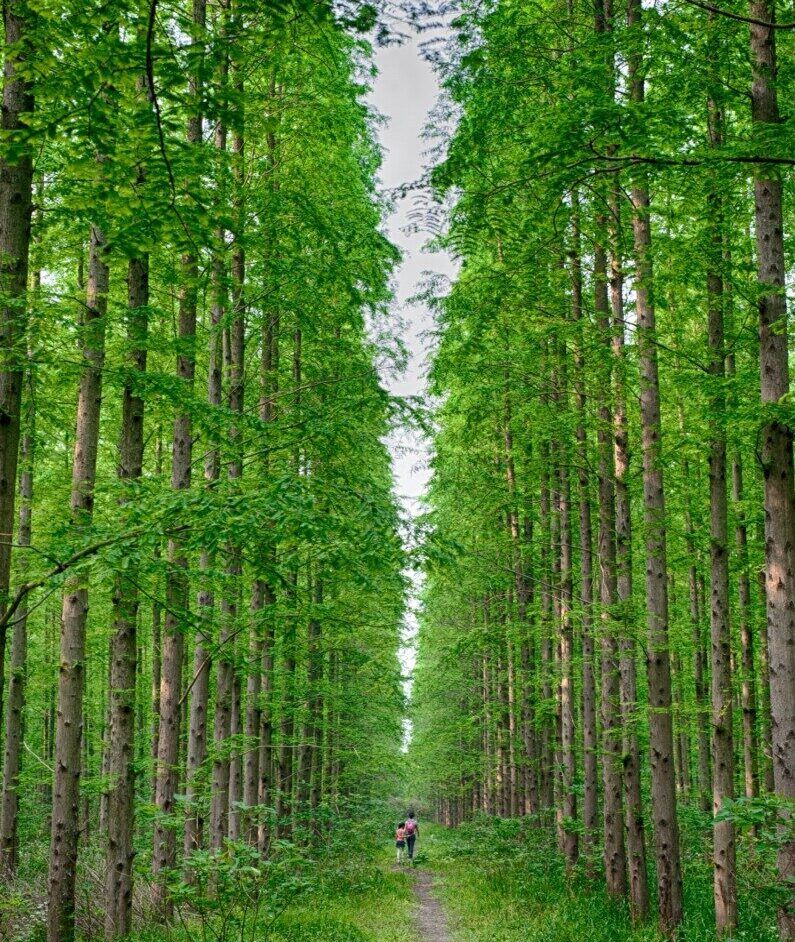Metasequoia bonsai cares. All about the living fossil tree.

Can you imagine having in your bonsai collection a tree that has been on Earth for thousands of years? Do you want to know more about dawn redwood tree? In this blog we explain the curiosities and the care of the Metasequoia bonsai.
Dawn redwood, the fossil tree
Known as Dawn redwood, it is a living fossil tree whose structure has not changed at all during its existence. The fossils found proved that it existed 55 million years ago. In 1941 the Japanese botanist Shigeru Miki, after a detailed study, rediscovered and gave it the scientific name Metasequoia.
The origin of this tree, that belongs to the Taxidiaceae family, comes from the Chinese area of Sichuan Hubei. It is a rainy area with humidity and constant flooding.
In their habitat, Metasequoias can grow up to 45 metres tall. The most fascinating feature is that, even if it is a conifer, it is a deciduous tree, the same that happens with the Marsh Cypress.
It has a fast growth. Metasequoias leaves are paripinnate and the bark is brown with red notes.
Its care is not complicated. This tree likes temperate and even a little cool climate.
Its name comes from the Greek prefix “meta” meaning “close to”. Metasequoia means “near the sequoia trees”.
Watering. The key point in the care of the Metasequoia bonsai.

You have to take in consideration the temperature, geographical area and the location. If you have doubts, you could consider to use a watering indicator at the beginning. It will give you a better understanding of the needs of your bonsai.
Also, we can use a trick that we also use with Shohin or Mame bonsais. We place a saucer under the tree filled with gravel. When we water the bonsai, part of the water remains in the saucer generating a humid microenvironment that is good for the tree.
Where do we place the dawn redwood bonsai?
Outdoors. We will choose an orientation with a very strong sunlight exposition. Metasequoias, like most other conifers, have a high need of light.
In winter we can also leave them outdoors. They resist very well the cold, that helps them to have a good rest and a vigorous spring blooming. Although it can withstand temperatures down to -18 °C, it needs to be protected from frost.
If summer temperatures are very high, we recommend placing it in semi-shade during this period.
What style of bonsai can we do with the Metasequoias?
Metasequoias in forest are famous and well known to all bonsai passionate. However, it is a tree that can be shaped to Chokkan style (formal), Moyogui (informal), Shidare zukuri (crying) and Yose-Ue (forest).

Diseases of the Metasequoia bonsai
The Metasequoia bonsai has no specific phytosanitary problems. It only needs to be protected from aphids and fungus attacks.
We recommend a preventive treatment at the beginning of the Spring and Summer seasons. A humidity control in the bonsai’s environment will also help to avoid any plague.
Pruning, pinching, and wiring a bonsai Metasequoia
It can be pruned at any time of the year, preferably in spring if it is an initial pruning. If it is for maintenance, it can be done in Spring and Autumn.
Metasequoia can be pinched at any time of the year, but normally we do it in Autumn. In Spring and Summer the tree grows, and when the growth is finished we can see which buds have grown out of the silhouette.
The wiring is best to be done in Autumn and Winter, when the tree will have stopped the growth. It is time to redesign the shape of your bonsai. If you wire the tree in Spring, due to the fast growth of the Metasequoia, you will have to remove the wire at the end of the Summer.
How and when is it best time to fertilize your bonsai?
We can use a combination of liquid and solid organic fertilizers. From the beginning of Spring to the end of Summer you should use a fertilizer rich in nitrogen, for example Nutribonsai combined with Bio-Gold.
From the end of Summer to the end of Autumn, we will use a fertilizer rich in phosphorus and potassium like Hiryo Gold Flowers and Fruits.
Do not apply fertilizer in winter.
When we have to repot a Metasequoia bonsai?
It grows very fast, so we suggest you to check the need of repotting every two years. It is not very exigent about substrate, so you can use Terrabonsai if you are a beginner or it is your first repotting. If you are more advanced, you can mix Akadama and Pomice at 50% or just Akadama while the tree is young. As a conifer, it needs an acidic soil so you can add Kiryuzuna to the substrate mix.
This is a special bonsai. There exists only one specie and it is the same that has existed for thousands of years. It is a resistant tree with a fast growth. Its autumn colouration is accentuated in the areas where the seasons are more intense.
Now that you know more about the Metasequoia bonsai cares, would you like to have a living fossil in your bonsai collection?
You may also be interested in…
Categories
Bonsai cultivation and care (60)
Bonsai gift (2)
Bonsai pests and diseases (7)
Bonsai repotting (3)
Bonsai species (1)
bonsai substrates (2)
Bonsai summer (1)
bonsai tools (1)
Bonsai work (13)
Ceramic pots (3)
Chinese culture (1)
Chinese culture (2)
Coniferous bonsai (2)
Conifers (1)


